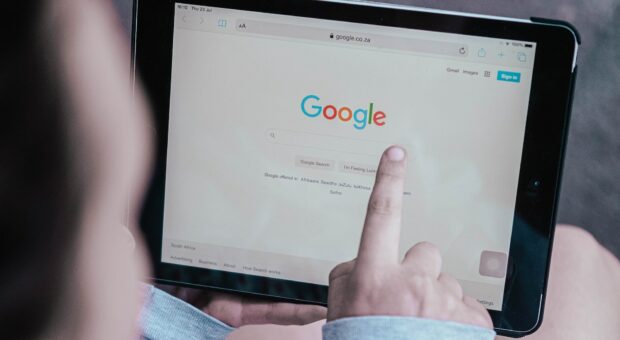
You’re about to start a PPC campaign with Google’s paid advertising product, AdWords. You know that AdWords is effective because it allows your ad to reach people at the very moment they are searching for what you have to offer.
Think the hard work is over? Not even close. Don’t ignore your Quality Scores because they’re about to impact your campaign.
Wait, what? What’s a Quality Score and why is it affecting my campaign? you ask. Hold on there, pardner, we’ll walk you through this.
What is Google AdWords?
Because for any given keyword there are multiple marketers that want their ad to appear in AdWords, Google holds an auction. The more you are willing to pay-per-click, the more likely your ad is to appear…but, and this is an important but, that’s not all.
In addition to considering a higher cost-per-click, Google also factors in the relevance of your ad and landing page to the keyword you’re bidding on.
What is a Quality Score?
Each keyword you’re bidding on receives a Quality Score, which is an estimate of the relevance of your ads and landing pages to the keywords you’re bidding on.
A Quality Score refers to the keyword alignment between the keyword and the PPC ad and its landing page.
VONT SEO Practice Lead Mark Beale explains, “Quality Score is essentially a grading system metric for your keywords in your AdWords account related to the relevance of your targeted landing page. Having a high Quality Score means that the Google AdWords system thinks your ad and landing page are relevant and useful to someone searching for the keyword.”
Quality Scores are given on a 1-10 scale with the higher the number, the higher the relevance of your ad and landing page.
Components that determine a Quality Score
There are three components that determine the Quality Score for each keyword in your AdWords campaign:
- the expected clickthrough rate (eCTR)
- ad relevance
- landing page experience
Expected Clickthrough Rate (eCTR)
The expected clickthrough rate (eCTR) is a keyword status that measures how likely it is that your ads will get clicked when shown for that keyword – irrespective of your ad’s position, extensions, and other ad formats that may affect the visibility of your ads. Put another way, your eCTR predicts whether your keyword is likely to lead to a click on your ads.
There are three possible eCTR statuses your keywords can receive: above average, average, or below average. If you receive an “average” or “above average” status that means there are no major problems with the keyword’s expected clickthrough rate when compared to all other keywords across AdWords. Receiving a “below average” status means that you might want to consider changing your ad text so that it’s more closely related to your keyword.
Remember, because it is a prediction, the expected clickthrough rate is different from the actual clickthrough rates shown in the “CTR” column of your account.
VONT’s Beale advises paying close attention to the eCTR: “You can use the eCTR to help identify keywords that might not be relevant to perform well. Keep an eye on this status to continually refine your ad copy messaging.”
Ad Relevance
Ad Relevance is a keyword status that measures how closely related your keyword is to your ads.
Where eCTR described how likely someone is to click on your ad, ad relevance describes how well your keyword matches the message in your ads. For example, if someone searches for your keyword and your ad shows up, would that ad seem directly relevant to his or her search?
Like eCTR, there are also three possible statuses for ad relevance: “above average”, “average” and “below average”. Receiving an “average” or “above average” status shows you there are no major problems, but receiving a “below average” status should be a signal for you that it’s time to make your ad copy match the keyword more closely.
Landing Page Experience (LPE)
Landing page experience (LPE) is the third status used by Google to calculate the Quality Score. It estimates how relevant and useful your website’s landing page will be to people who click on your ad.
High scoring landing pages have four qualities:
- they are usually well-organized
- they have text that relates to a user’s search terms
- they have a lower bounce rate
- they have a higher length of time that visitors spend on the page
The landing page experience status describes whether your landing page is likely to provide a good experience to customers who click your ad and land on your website.
For example, is your landing page clear and useful to customers? Is your landing page related to your keyword and what customers are searching for? Is the page clearly organized, engaging, and easy to navigate?
All these factors play a role in determining your landing page experience status. Higher levels of engagement with your landing page will help your LPE rating – and will also build trust, generate leads, create new customers, and grow sales.
The takeaway for understanding Quality Score
Paying close attention to your Quality Score will help you increase the likelihood of your winning an AdWords auction with a lower cost-per-click. Advises Beale: “Even if your overall Quality Score is high, looking at each of the individual statuses can help you identify potential areas for improvement.” Remember, with digital marketing it’s all about continually refining your campaigns to achieve better results at a lower cost.
About VONT Performance Digital Marketing
At VONT we believe that change is the only constant in the digital world – and that excites us. When tools and environments are constantly changing, new opportunities to help our clients achieve success are constantly arising. Each new advertising technology, social platform, or design approach allows us to improve on the results we achieve for our clients.
We believe in this idea of continual fine-tuning so much that we named our company VONT, which means to achieve exponential improvement in incremental steps. It is our core belief, and the reason why we are not simply a web design company or simply a digital advertising agency, but rather a long-term, single source partner providing a comprehensive array of web development and digital marketing capabilities.
In short, we’re here so that our clients achieve success in the ever-changing digital world. If you’d like to learn more about VONT and the work we’ve done with our client partners, visit our Work page. Or, if you have a question, contact us. We’ll get right back to you!

